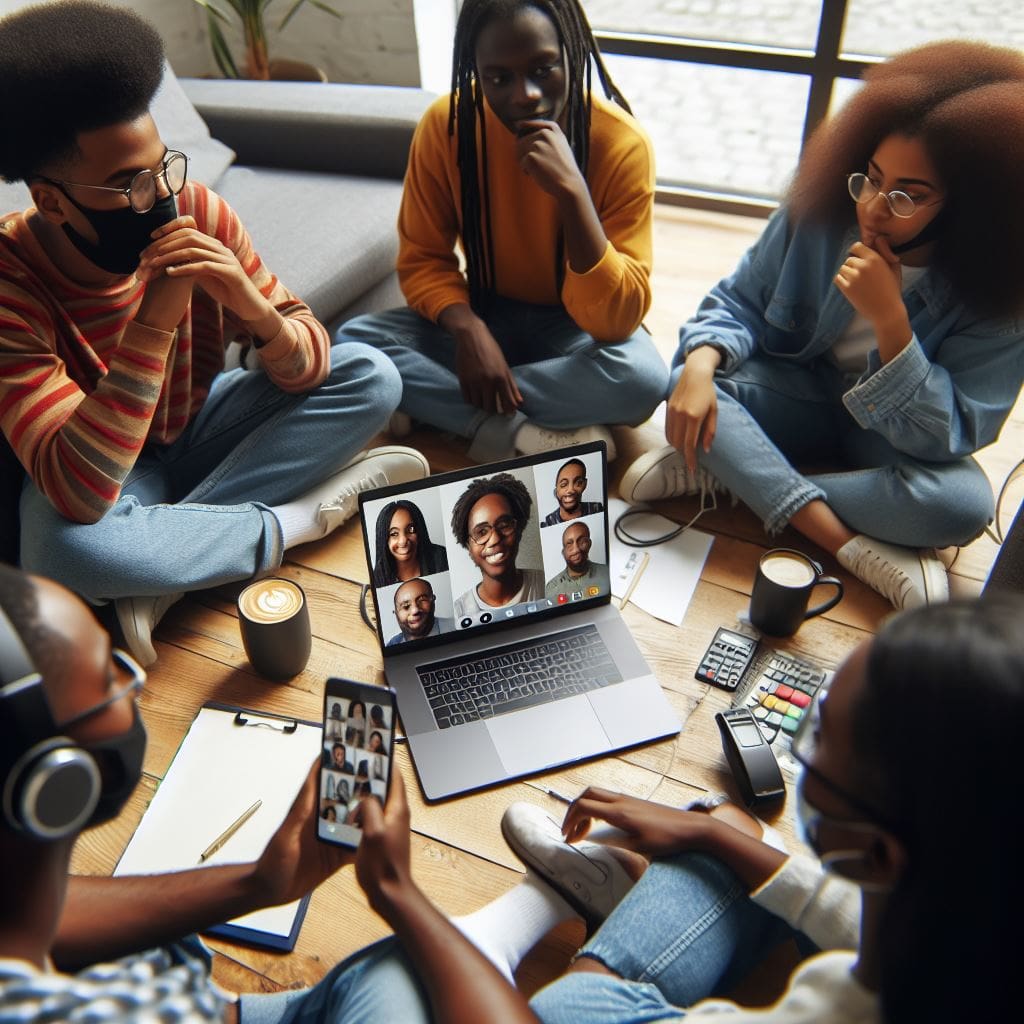
Many people are craving a sense of belonging and stronger social connections in their lives, especially in today’s fast-paced and often isolated world.
Because the truth is loneliness can have a profound impact on our overall wellbeing, affecting not only our mental health but also our physical health.
However, the good news is that fostering these connections is possible and can greatly improve our wellbeing. In this article, we will explore practical strategies to help you move from a state of loneliness to a place of belonging.
Whether you are looking to strengthen existing relationships or build new ones, we will provide you with actionable tips to foster deeper connections and create a sense of community.
From joining clubs and organizations to developing meaningful conversations and nurturing empathy, we will cover a range of approaches that can help you enhance your social connections and ultimately lead to improved wellbeing.
No matter where you are in your journey, it’s never too late to prioritize social connections and reap the benefits of a supportive and connected community.
So, let’s dive in and start fostering stronger social connections for a happier and healthier life.
The Importance of Stronger Social Connections for Wellbeing
Humans are inherently social beings, and our need for connection and belonging is deeply ingrained. Strong social connections have been linked to numerous benefits, including improved mental and emotional health, increased longevity, and enhanced resilience to stress.
On the other hand, chronic loneliness can have detrimental effects on our wellbeing, leading to increased risk of depression, anxiety, and even physical health problems such as cardiovascular diseases and weakened immune system.
Building and nurturing social connections is essential for our happiness and overall quality of life. When we feel connected to others and have a sense of belonging, we experience higher levels of life satisfaction, self-esteem, and purpose.
Social connections provide us with support, understanding, and a sense of security, helping us navigate life’s challenges and celebrate its joys.
By prioritizing social connections, we can create a solid foundation for our wellbeing and enhance our overall quality of life.
The Impact of Loneliness on Mental and Physical Health
Loneliness is more than just a fleeting feeling of sadness or isolation. It is a chronic condition that can have severe consequences for our mental and physical health.
Research has shown that loneliness is associated with an increased risk of mental health disorders such as depression and anxiety. It can also contribute to cognitive decline and a higher likelihood of developing Alzheimer’s disease later in life.
In addition to its impact on mental health, loneliness can take a toll on our physical well-being. Studies have found that socially isolated individuals have a higher risk of developing chronic health conditions such as heart disease, obesity, and diabetes.
Loneliness can weaken our immune system, making us more susceptible to infections and other illnesses.
It can even shorten our lifespan, with some studies suggesting that chronic loneliness has a similar mortality risk as smoking or obesity.
Given the significant impact of loneliness on our overall health, it becomes crucial to address this issue and actively work towards fostering stronger social connections.
By doing so, we can not only improve our mental and emotional well-being but also safeguard our physical health.
Understanding the Different Types of Social Connections
Social connections come in various forms, and it’s important to understand the different types and their impact on our wellbeing.
While some connections may be superficial or transactional, others can be deep and meaningful, providing us with a sense of belonging and support.
- Family Connections: Family connections are often the strongest and most enduring. These connections provide a sense of identity, love, and support. Maintaining healthy relationships with family members can significantly contribute to our overall wellbeing.
- Friendships: Friends play a vital role in our lives, offering companionship, emotional support, and shared experiences. Cultivating deep and meaningful friendships can be incredibly rewarding and can greatly enhance our sense of belonging.
- Romantic Relationships: Romantic partnerships provide us with intimacy, emotional support, and a sense of belonging. Nurturing a healthy and fulfilling romantic relationship can have a profound positive impact on our overall wellbeing.
- Community Connections: Our connection to the larger community, such as our neighborhood, school, or workplace, also plays a significant role in our sense of belonging. Engaging with our community and actively participating in its activities can foster a sense of connection and shared purpose.

By understanding the different types of social connections, we can identify areas for improvement and focus on fostering stronger relationships in all aspects of our lives.
Strategies for Building and Strengthening Social Connections
Building and strengthening social connections takes time and effort, but the rewards are well worth it. Here are some actionable strategies to help you foster deeper connections and create a sense of community in your life:
- Join Clubs and Organizations: Seek out clubs and organizations that align with your interests and values. By becoming a part of these communities, you can meet like-minded individuals and form meaningful connections.
- Develop Meaningful Conversations: Engage in conversations that go beyond small talk. Ask open-ended questions, actively listen, and show genuine interest in others. Meaningful conversations can help build trust and create deeper connections.
- Nurture Empathy: Practice empathy by putting yourself in others’ shoes and seeking to understand their perspectives. Show compassion and support for others, and you will find that they are more likely to reciprocate, strengthening your connection.
- Be Authentic: Be true to yourself and allow others to see the real you. Authenticity builds trust and fosters deeper connections. Embrace vulnerability and let others in, creating a space for genuine connection.
- Seek Common Interests: Look for shared interests and activities that can bring people together. Whether it’s joining a sports team, taking a class, or participating in a hobby group, shared interests provide a natural foundation for building connections.
- Prioritize Quality Over Quantity: Focus on cultivating a few meaningful relationships rather than spreading yourself too thin. Quality connections are more enriching and provide the support and understanding we need.
- Practice Active Listening: Truly listen to others without judgment or interruption. Give them your full attention and validate their feelings and experiences. Active listening fosters trust and strengthens connections.
- Show Appreciation: Express gratitude and appreciation for the people in your life. Let them know how much they mean to you and how grateful you are for their presence. This simple act can deepen connections and create a sense of belonging.
By implementing these strategies in your life, you can gradually build and strengthen social connections, creating a supportive and connected community around you.
The Role of Technology in Fostering Social Connections
Technology has revolutionized the way we connect and interact with others, offering both opportunities and challenges when it comes to fostering social connections.

While social media and digital platforms have made it easier to stay connected with friends and family, they can also contribute to feelings of loneliness and isolation.
It’s essential to strike a balance between online and offline interactions and use technology as a tool to enhance, rather than replace, real-life connections.
Here are some ways to make the most of technology in fostering social connections:
- Stay Connected: Use social media and messaging apps to maintain connections with friends and family who are geographically distant. Regularly reach out and engage in meaningful conversations to nurture these relationships.
- Join Online Communities: Explore online communities and forums centered around your interests or hobbies. Engage in discussions, share experiences, and connect with like-minded individuals who can become valuable sources of support and companionship.
- Attend Virtual Events: Participate in virtual events, webinars, or workshops that align with your interests. These platforms provide opportunities to meet new people, learn from experts, and engage in meaningful conversations.
- Use Video Calls: When possible, opt for video calls instead of text-based communication. Seeing someone’s facial expressions and body language adds depth and authenticity to the interaction, making it feel more personal and connected.
While technology can never fully replace in-person interactions, it can be a powerful tool for strengthening existing connections and expanding our social networks.
Overcoming Barriers to Social Connection
Building and maintaining social connections can sometimes be challenging, as various barriers can hinder our efforts.
It’s important to recognize and address these barriers to ensure that we can foster the connections we desire.
Here are some common barriers to social connection and strategies to overcome them:
- Fear of Rejection: The fear of being rejected or judged can prevent us from initiating or deepening social connections. Remember that everyone experiences this fear to some extent, and taking small steps outside your comfort zone can lead to meaningful connections.
- Busy Lifestyles: Busy schedules and demanding responsibilities can make it difficult to prioritize social connections. Make a conscious effort to carve out time for meaningful interactions, even if it means rearranging your schedule or setting boundaries.
- Geographical Distance: Physical distance can pose challenges in maintaining connections with loved ones. Leverage technology to bridge the gap and stay connected through regular video calls, virtual hangouts, or even sending handwritten letters.
- Limited Social Opportunities: Living in areas with limited social opportunities can make it harder to meet new people. Look for alternative ways to expand your social circle, such as attending local events, joining online communities, or volunteering for causes you care about.
- Self-Imposed Isolation: Sometimes, we unintentionally isolate ourselves due to low self-esteem or a lack of confidence. Recognize your self-imposed isolation and challenge yourself to step outside your comfort zone, seeking opportunities for connection.
By acknowledging and actively working to overcome these barriers, you can create a path towards stronger social connections and a greater sense of belonging.
Nurturing Relationships in the Digital Age
In today’s digital age, it’s crucial to adapt our approach to nurturing relationships.
While technology can facilitate connections, it’s important to maintain a balance and prioritize meaningful, face-to-face interactions.
Here are some tips for nurturing relationships in the digital age:
- Set Boundaries: Establish boundaries around technology use to ensure that it doesn’t interfere with your real-life interactions. Designate device-free times or spaces to fully engage with others.
- Practice Mindful Communication: Be present and fully engaged during conversations, whether they happen online or offline. Avoid distractions and actively listen to the other person, making them feel valued and heard.
- Plan Offline Activities: Make an effort to engage in activities that don’t involve screens. Plan outings, meetups, or shared experiences that allow you to connect with others on a deeper level.
- Embrace Vulnerability: Share your thoughts, experiences, and emotions authentically, both online and offline. Embracing vulnerability fosters deeper connections and encourages others to open up as well.
- Remember the Human Element: While online interactions can be convenient, don’t forget the importance of face-to-face connections. Prioritize spending quality time with loved ones in person and make an effort to create lasting memories.
By consciously nurturing relationships in the digital age, we can strike a balance between technology and real-life connections, enhancing our overall sense of belonging and wellbeing.
The Power of Community Involvement
Community involvement can be a powerful way to foster social connections and create a sense of belonging.
Engaging with your community not only benefits others but also enriches your own life. Here’s how you can tap into the power of community involvement:
- Volunteer for a Cause: Find a cause or organization that aligns with your values and interests. Volunteer your time and skills to make a positive impact in your community. Working alongside like-minded individuals can lead to lasting friendships and a sense of purpose.
- Attend Local Events: Participate in community events, festivals, or workshops. These gatherings provide opportunities to meet new people, connect with neighbors, and build a sense of community pride and belonging.
- Join a Local Club or Group: Explore local clubs, hobby groups, or sports teams that align with your interests. These organizations offer a built-in community and provide avenues for shared experiences and connections.
- Support Local Businesses: Patronize local businesses and establishments in your community. Get to know the owners and employees, and foster connections that extend beyond mere transactions. Supporting local businesses helps create a sense of community and boosts the local economy.
- Engage in Civic Activities: Participate in local governance or community initiatives. Attend town hall meetings, join neighborhood associations, or get involved in community improvement projects. These activities allow you to make a direct impact on your community and forge connections with fellow residents.
Community involvement not only strengthens social connections but also fosters a sense of pride, purpose, and belonging in your local area.
Seeking Professional Help and Support
Sometimes, despite our best efforts, building and fostering social connections can be challenging. If you find yourself struggling with feelings of loneliness or difficulty forming meaningful relationships, seeking professional help and support can be beneficial.
Therapists, counselors, and support groups can provide guidance, strategies, and a safe space to explore and address any underlying issues that may be hindering your ability to connect with others.
They can help you develop social skills, build confidence, and navigate the complexities of relationships.
Don’t hesitate to reach out for professional help if you feel overwhelmed or stuck in your journey towards stronger social connections.
Remember, seeking support is a sign of strength, and it can lead to significant improvements in your overall wellbeing.
Conclusion: Embracing the Power of Social Connections for a Happier, Healthier Life
In a world where loneliness is increasingly prevalent, prioritizing social connections is essential for our wellbeing. The impact of strong social connections on our mental, emotional, and physical health cannot be overstated.
By fostering deeper connections and creating a sense of belonging, we can experience greater happiness, resilience, and overall life satisfaction.
From joining clubs and organizations to developing meaningful conversations and nurturing empathy, there are countless ways to foster stronger social connections.
Embrace technology as a tool to enhance, not replace, real-life interactions. Overcome barriers and actively engage with your community, seeking opportunities for involvement and connection.
Start taking small steps today to foster stronger social connections, and watch as your wellbeing and quality of life improve.



